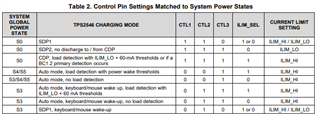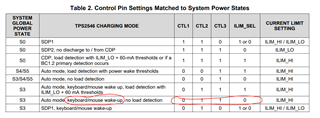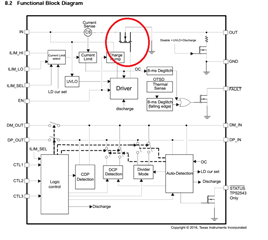Hello,
I am looking to use this product (TPS2546RTER) in my USB-A charging design. I am not transferring any data and just doing charging (aka DCP).
I am looking to charge up to 12W with a status to activate the current limit (0.2A - 2.97A, approximately). So I have the current configuration:
CTL1 = 0
CTL2 = 1
CTL3 = 1
ILIM_SEL = 1
ILIM_LO Resistor: 210kOhm
ILIM_HI Resistor: 16.9kOhm
According to the data sheet, this configuration seems right, but the note confuses me. "DCP Load present governed by Load Detection - Non Power wake limits."
Does this mean that it will be INACTIVE between my current range (0.2 - 2.97A)? If not, what would be the result?

As a reference to ensure the design is correct, please see my schematic for it below






